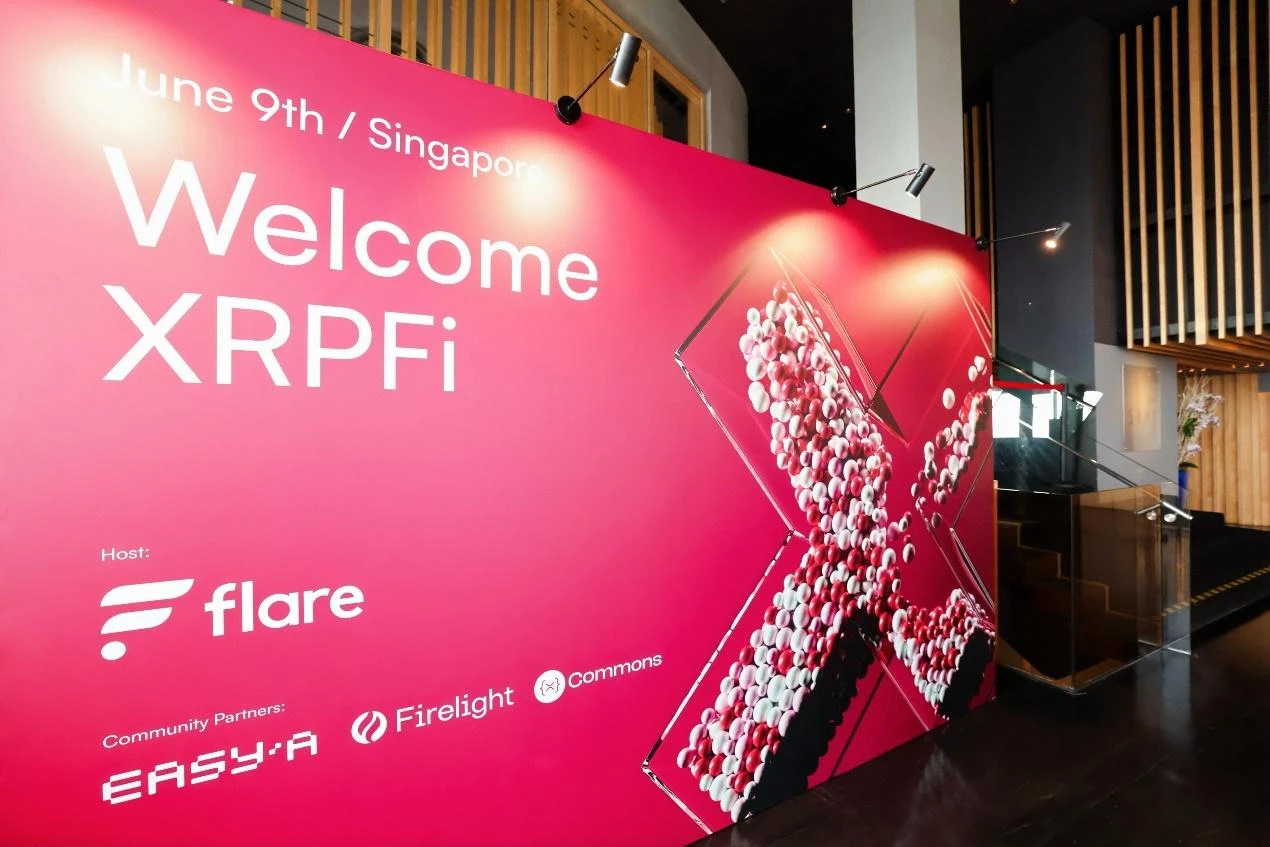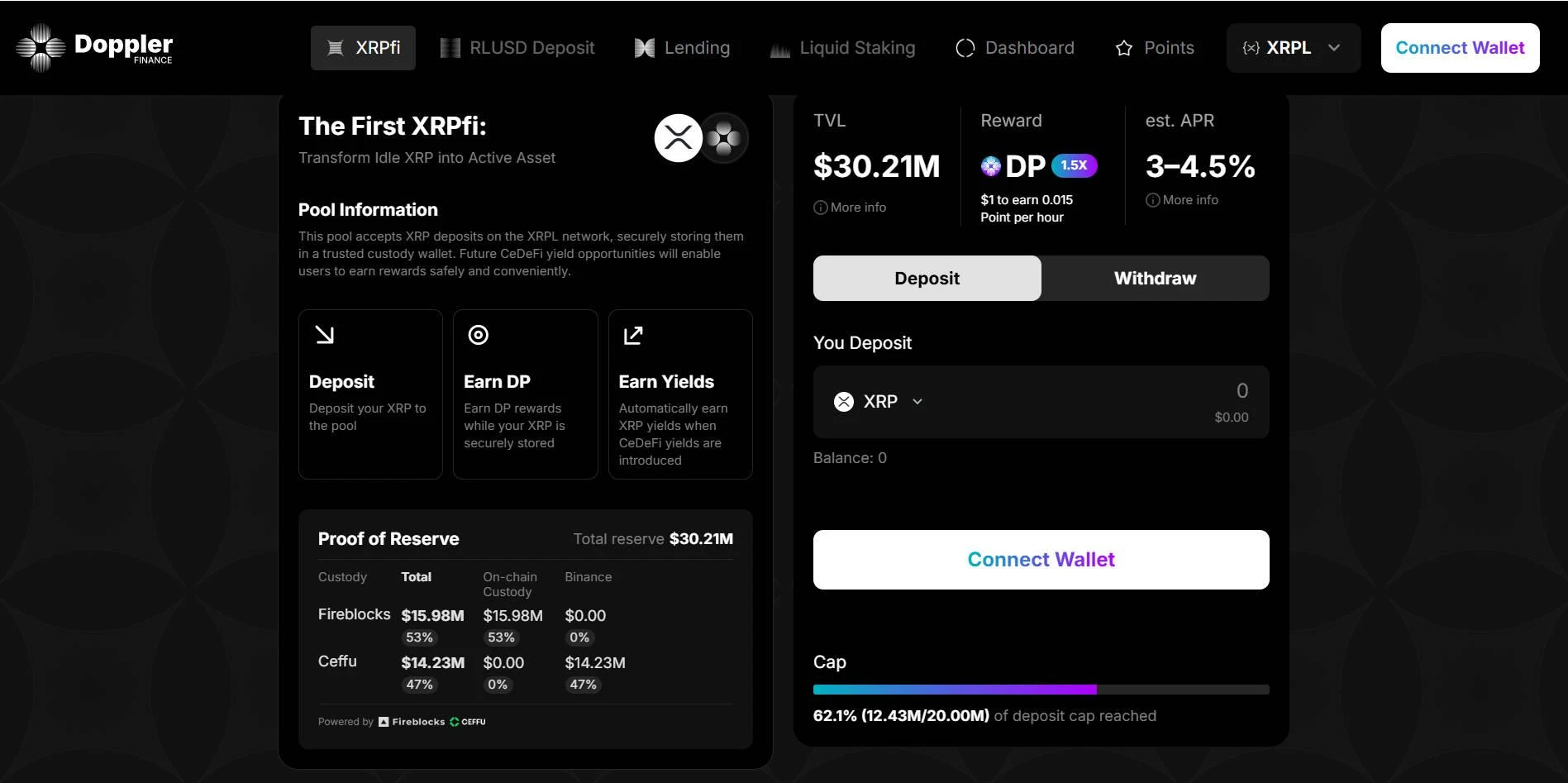Original Author: Weilin, PANews
On June 10, the XRP Ledger Apex 2025 conference was held in Singapore. At the conference, a concept called "XRPFi" became the focus of heated discussions on social media. XRPFi, which combines XRP with decentralized finance (DeFi), is increasingly seen by practitioners as a new path to activate XRP, an established crypto asset, and drive the growth of the XRPL and Ripple ecosystem.
XRP is one of the most representative assets in the crypto market, currently with a market cap close to $134.4 billion, making it the highest market cap non-smart contract cryptocurrency after Bitcoin. With its fast and low-cost cross-border payment capabilities, XRP has stable applications in traditional financial scenarios. However, in the on-chain domain, XRP has long lacked smart contract support, making it difficult to integrate into the mainstream DeFi ecosystem, and this structural contradiction has gradually become a focal point of attention.
As the SEC suspends its lawsuit against Ripple, Ripple's stablecoin RLUSD approaches a market cap of $390 million, and speculation about an XRP ETF continues, investor expectations for XRP's future are gradually heating up. Some institutions and retail investors are beginning to focus on how XRP can leverage DeFi to generate returns and enhance asset utilization, which has also driven the birth and development of the "XRPFi" concept.
Empowering XRPFi with Flare to Build a Multi-Chain Interoperable DeFi Ecosystem
In the current development process of XRPFi, Flare Network is seen as a key infrastructure provider. While the XRP Ledger (XRPL) performs excellently in terms of speed and stability, it has inherent limitations in the composability and contract functionality required for DeFi. Therefore, Flare has chosen to technically empower XRP, becoming the core engine bridging the traditional XRPL and the multi-chain DeFi ecosystem.
Flare is an EVM-compatible L1 blockchain designed to achieve multi-chain interoperability. Its FAssets protocol can map non-smart contract assets like XRP into FXRP, enabling contract call capabilities and seamlessly integrating into decentralized lending, trading, and derivatives protocols. With this mechanism, XRP holders can participate in mainstream on-chain yield activities, including staking and liquidity mining.
Additionally, Flare has introduced the USD₮0 stablecoin, a native asset issued based on the LayerZero OFT (Omnichain Fungible Token) standard, which possesses cross-chain native interoperability. When paired with XRP, USD₮0 can not only be used to build trading depth pools and lending collateral but also connect to the USDT ecosystem with a market cap exceeding $155 billion, injecting high liquidity into the XRPFi ecosystem.
According to official data, the Flare ecosystem has seen significant growth recently: as of June 10, the TVL surpassed $157 million, primarily due to the launch of USD₮0, which currently has a supply of approximately $92.1 million. Looking at a longer time frame, from February 2024 to February 2025, Flare's TVL is expected to grow by over 400% year-on-year. At the same time, Flare has also integrated wallet tools compatible with XRPL, such as Bifrost and Oxenflow, further lowering the entry barrier for users.
Flare describes its XRPFi system as a "flywheel model": using USD₮0 to provide capital sources, FXRP to achieve contract composability, and the pairing of the two brings liquidity, which in turn drives more DeFi applications and real-world scenarios, thereby feeding back into XRP's long-term ecological value.
In the future, Flare also plans to bring non-smart contract assets like Bitcoin and Dogecoin into Flare, expanding its use cases in the DeFi field.
Building the XRPFi Yield Matrix: Parallel Tracks of CeDeFi and On-Chain Strategies

While Flare builds on-chain compatibility, Doppler Finance has designed a complete set of yield mechanisms around XRP, attempting to fill the gaps in XRP's past in terms of yield generation and financial products. As of June 8, the platform has attracted over $30 million in TVL, becoming one of the important participants in the XRPFi track.
Doppler Finance offers two main types of yield products: CeDeFi yield and on-chain DeFi strategies. The former primarily manages assets through institutional-grade custody and quantitative operations, while the latter explores on-chain yield scenarios including lending, stablecoin strategies, and staking.
In the CeDeFi model, users deposit XRP into a dedicated address, with assets held by custodians such as Fireblocks and Ceffu, and are then transferred to centralized exchanges to conduct quantitative strategies, such as arbitrage and basis trading. Returns are settled off-chain and then returned to user accounts.
In terms of on-chain yield, Doppler is actively connecting with XRPL sidechain ecosystems, including EVM-compatible networks and emerging protocols. Its strategies include:
XRP Lending: By depositing XRP into audited and compliant lending protocols, users can earn interest or native rewards. Borrowers use other assets as collateral, and the platform automatically manages the liquidation process to ensure security.
Stablecoin Yield Strategies: Using XRP as collateral to borrow stablecoins (like USDC), which are then deployed into stablecoin yield protocols. Doppler adopts a conservative LTV ratio and dynamically adjusts positions to achieve low-risk returns.
Liquid Staking and Leverage Strategies: Users can perform one-click leveraged staking in specific LST pools, especially around sidechain tokens like ROOT. This mechanism simplifies cumbersome processes through automated contracts, enhancing user experience.
To further mitigate risks, Doppler Finance is building a risk-isolated lending market, allowing different asset pools to operate independently, thus avoiding high-volatility assets from dragging down overall system stability. In addition to core pools containing mainstream assets like XRP, USDC, and ROOT, Doppler Finance also plans to launch multiple isolated markets, including LST pools designed specifically for leveraged yield farming and isolated markets containing game tokens from the Futureverse ecosystem.
As XRPFi involves cross-chain asset management, custody, and advanced strategy execution, its security mechanisms have become an important part of project design. Currently, Doppler Finance employs a multi-layer risk control mechanism.
In terms of asset custody, the platform selects top service providers in the industry (such as Fireblocks and Ceffu) and ensures asset security through cold wallet management, on-chain verification, and bankruptcy isolation. For quantitative trading, the platform adopts a multi-strategy, multi-team collaboration model, designing most operations as "lending contract structures" to ensure that the principal can be recovered under non-extreme conditions.
Additionally, according to official information, all cooperating trading parties must undergo rigorous due diligence, including assessments of historical performance, strategy stability, AUM scale, and financial risks, to filter qualified institutions for participation.
Filling the Gaps in the DeFi Market, XRPFi is Still in the Early Stages
As the Ethereum DeFi ecosystem becomes increasingly competitive, the market is turning its attention to high market cap assets that have not yet been fully activated. The emergence of XRPFi is filling the long-standing gap of "high market cap, low chain use" for XRP. XRPFi, through technologies like Flare Network's FAssets protocol, enables XRP, which originally lacked smart contract capabilities, to enter the DeFi ecosystem. Doppler Finance is building a complete set of sustainable yield mechanisms, including CeDeFi yields and liquid staking, which not only have real pathways but also invest resources to enhance security and user experience.
Logically, the development of XRPFi responds to the urgent need to activate XRP and the growth of the Ripple ecosystem. However, it should be noted that the current XRPFi ecosystem is still in its early stages. While the product roadmap of Flare and Doppler is relatively clear, the overall user scale, liquidity depth, and protocol maturity still need to be validated. As old assets integrate into new narratives, what does the future hold? PANews will continue to monitor the situation.
免责声明:本文章仅代表作者个人观点,不代表本平台的立场和观点。本文章仅供信息分享,不构成对任何人的任何投资建议。用户与作者之间的任何争议,与本平台无关。如网页中刊载的文章或图片涉及侵权,请提供相关的权利证明和身份证明发送邮件到support@aicoin.com,本平台相关工作人员将会进行核查。



